Harnessing the Radio Frequency Power Level of Cellular Terminals for Weather Parameter Sensing
Abstract
:1. Introduction
2. Measurement Setup and Data
2.1. Measurement Site
2.2. Cellular Terminal
2.3. Meteorological Parameters
3. Results
3.1. Precipitation Rate Classification through Signal Power
- No Rain, 0 mm/h;
- Light Rain, 0 to 3 mm/h;
- Moderate Rain, 3 to 15 mm/h;
- Heavy Rain, 15 to 30 mm/h;
- Very Heavy Rain, higher than 30 mm/h.
- Measurements were acquired between May and November 2023 (almost seven months).
- Application of a 5 min moving average to the RSSI data.
- The precipitation level was categorized.
- The results of precipitation events showed that precipitation led to a decline in signal power (attenuation).
- After precipitation, the signal’s power levels did not revert to the previous state, alluding probably to increased humidity.
- Statistical approaches included a trained binary decision tree model with an overall accuracy of over 88%.
3.2. Impact of Atmospheric Humidity and Other Meteorological Parameters on the Signal
- Application of a 5 min moving average to the RSSI data.
- Examination of the temperature (T), relative humidity (RH), absolute humidity (AH), atmospheric pressure (P), and radio refractivity of the air (N).
- Apparent correlation between power loss and absolute humidity (AH).
- The signal power levels decreased with an increase in the radio refractivity of the air.
4. Discussion
4.1. Comparative Study
4.2. Restrictions and Challenges
5. Conclusions
Author Contributions
Funding
Data Availability Statement
Acknowledgments
Conflicts of Interest
Abbreviations
| 3GPP | 3rd Generation Partnership Project |
| AdaBoost | Adaptive Boosting |
| AMS | Automatic meteorological station |
| ARFCN | Absolute Radio Frequency Channel Number |
| BTS | Base transceiver station |
| Cell ID | Cell Identity |
| CML | Commercial microwave link |
| CT | Cellular terminal |
| EARFCN | E-UTRA Absolute Radio Frequency Channel Number |
| E-UTRA | Evolved Universal Terrestrial Radio Access |
| FNN | Feedforward Neural Network |
| FNR | False negative rate |
| FPR | False positive rate |
| GSM | Global System for Mobile communications |
| IEEE 802.15.4 | Institute of Electrical and Electronics Engineers Standard 802.15.4 |
| IMSI | International Mobile Subscriber Identity |
| IoT | Internet of Things |
| ISM | Industrial, Scientific, and Medical |
| KNN | K-Nearest Neighbors |
| LAC | Location Area Code |
| LoRa | Long Range |
| LTE | Long-Term Evolution |
| MCC | Mobile Country Code |
| MNC | Mobile Network Code |
| OWSN | Opportunistic wireless sensor network |
| QPE | Quantitative precipitation estimation |
| RSSI | Received Signal Strength Indicator |
| SVM | Support Vector Machine |
| TNR | True negative rate |
| TPR | True positive rate |
References
- Zheng, S.; Han, C.; Huo, J.; Cai, W.; Zhang, Y.; Li, P.; Zhang, G.; Ji, B.; Zhou, J. Research on Rainfall Monitoring Based on E-Band Millimeter Wave Link in East China. Sensors 2021, 21, 1670. [Google Scholar] [CrossRef]
- Zhang, P.; Liu, X.; Pu, K. Precipitation Monitoring Using Commercial Microwave Links: Current Status, Challenges and Prospectives. Remote Sens. 2023, 15, 4821. [Google Scholar] [CrossRef]
- Dunkerley, D. Recording Rainfall Intensity: Has an Optimum Method Been Found? Water 2023, 15, 3383. [Google Scholar] [CrossRef]
- Alozie, E.; Abdulkarim, A.; Abdullahi, I.; Usman, A.D.; Faruk, N.; Olayinka, I.-F.Y.; Adewole, K.S.; Oloyede, A.A.; Chiroma, H.; Sowande, O.A.; et al. A Review on Rain Signal Attenuation Modeling, Analysis and Validation Techniques: Advances, Challenges and Future Direction. Sustainability 2022, 14, 11744. [Google Scholar] [CrossRef]
- Lian, B.; Wei, Z.; Sun, X.; Li, Z.; Zhao, J. A Review on Rainfall Measurement Based on Commercial Microwave Links in Wireless Cellular Networks. Sensors 2022, 22, 4395. [Google Scholar] [CrossRef]
- Overeem, A.; Leijnse, H.; Uijlenhoet, R. Measuring Urban Rainfall Using Microwave Links from Commercial Cellular Communication Networks. Water Resour. Res. 2011, 47. [Google Scholar] [CrossRef]
- Uijlenhoet, R.; Overeem, A.; Leijnse, H. Opportunistic Remote Sensing of Rainfall Using Microwave Links from Cellular Communication Networks. WIREs Water 2018, 5, e1289. [Google Scholar] [CrossRef]
- Overeem, A.; Leijnse, H.; Uijlenhoet, R. Rainfall Monitoring Using Microwave Links from Cellular Communication Networks: The Dutch Experience. In Proceedings of the 2018 IEEE Statistical Signal Processing Workshop, SSP 2018, Freiburg im Breisgau, Germany, 10–13 June 2018; Institute of Electrical and Electronics Engineers Inc.: Piscataway, NJ, USA, 2018; pp. 110–114. [Google Scholar]
- Overeem, A.; Leijnse, H.; Uijlenhoet, R. Two and a Half Years of Country-Wide Rainfall Maps Using Radio Links from Commercial Cellular Telecommunication Networks. Water Resour. Res. 2016, 52, 8039–8065. [Google Scholar] [CrossRef]
- Overeem, A.; Leijnse, H.; Uijlenhoet, R. Country-Wide Rainfall Maps from Cellular Communication Networks. Proc. Natl. Acad. Sci. USA 2013, 110, 2741–2745. [Google Scholar] [CrossRef]
- Rayitsfeld, A.; Samuels, R.; Zinevich, A.; Hadar, U.; Alpert, P. Comparison of Two Methodologies for Long Term Rainfall Monitoring Using a Commercial Microwave Communication System. Atmos. Res. 2012, 104–105, 119–127. [Google Scholar] [CrossRef]
- Janco, R.; Ostrometzky, J.; Messer, H. In-City Rain Mapping from Commercial Microwave Links—Challenges and Opportunities. Sensors 2023, 23, 4653. [Google Scholar] [CrossRef]
- Polz, J.; Chwala, C.; Graf, M.; Kunstmann, H. Rain Event Detection in Commercial Microwave Link Attenuation Data Using Convolutional Neural Networks. Atmos. Meas. Tech. 2020, 13, 3835–3853. [Google Scholar] [CrossRef]
- Graf, M.; Chwala, C.; Polz, J.; Kunstmann, H. Rainfall Estimation from a German-Wide Commercial Microwave Link Network: Optimized Processing and Validation for One Year of Data. Hydrol. Earth Syst. Sci. 2020, 24, 2931–2950. [Google Scholar] [CrossRef]
- Seidel, J.; Bárdossy, A.; Eisele, M.; Hachem, A.E.; Chwala, C.; Graf, M.; Kunstmann, H.; Demuth, N.; Gerlach, N. Using Opportunistic Rainfall Sensing to Improve Areal Precipitation Estimates and Run-off Modelling—The Case Study of the Ahr Flood in July 2021. In Proceedings of the EGU General Assembly 2023, Vienna, Austria, 24–28 April 2023. [Google Scholar]
- Rios Gaona, M.F.; Overeem, A.; Raupach, T.H.; Leijnse, H.; Uijlenhoet, R. Rainfall Retrieval with Commercial Microwave Links in São Paulo, Brazil. Atmos. Meas. Tech. 2018, 11, 4465–4476. [Google Scholar] [CrossRef]
- Wolff, W.; Overeem, A.; Leijnse, H.; Uijlenhoet, R. Rainfall Retrieval Algorithm for Commercial Microwave Links: Stochastic Calibration. Atmos. Meas. Tech. 2022, 15, 485–502. [Google Scholar] [CrossRef]
- Zohidov, B.; Andrieu, H.; Servières, M.; Normand, N. Retrieval of Rainfall Fields in Urban Areas Using Attenuation Measurements from Mobile Phone Networks: A Modeling Feasibility Study. Hydrol. Earth Syst. Sci. Discuss. 2016, 1–30. [Google Scholar] [CrossRef]
- Blettner, N.; Fencl, M.; Bareš, V.; Kunstmann, H.; Chwala, C. Transboundary Rainfall Estimation Using Commercial Microwave Links. Earth Space Sci. 2023, 10, e2023EA002869. [Google Scholar] [CrossRef]
- Blettner, N.; Fencl, M.; Bareš, V.; Chwala, C.; Kunstmann, H. Challenges in the Usage of Commercial Microwave Links for the Generation of Transboundary German-Czech Rainfall Maps. In Proceedings of the EGU General Assembly 2023, Vienna, Austria, 24–28 April 2023. [Google Scholar]
- Djibo, M.; Chwala, C.; Ouedraogo, W.Y.S.B.; Doumounia, A.; Sanou, S.R.; Sawadogo, M.; Kunstmann, H.; Zougmoré, F. Commercial Microwave Link Networks for Rainfall Monitoring in Burkina Faso: First Results from a Dense Network in Ouagadougou. In Proceedings of the 2023 IEEE Multi-Conference on Natural and Engineering Sciences for Sahel’s Sustainable Development (MNE3SD), Bobo-Dioulasso, Burkina Faso, 23–25 February 2023; pp. 1–7. [Google Scholar]
- Djibo, M.; Chwala, C.; Graf, M.; Polz, J.; Kunstmann, H.; Zougmoré, F. High-Resolution Rainfall Maps from Commercial Microwave Links for a Data-Scarce Region in West Africa. J. Hydrometeorol. 2023, 24, 1847–1861. [Google Scholar] [CrossRef]
- Daher, A.; Al Sakka, H.; Chaaban, A.K. Low Complexity Single-Layer Neural Network for Enhanced Rainfall Estimation Using Microwave Links. J. Hydroinformatics 2022, 25, 101–112. [Google Scholar] [CrossRef]
- Samad, M.A.; Diba, F.D.; Choi, D.-Y. Rain Attenuation Scaling in South Korea: Experimental Results and Artificial Neural Network. Electronics 2021, 10, 2030. [Google Scholar] [CrossRef]
- Christofilakis, V.; Tatsis, G.; Chronopoulos, S.K.; Sakkas, A.; Skrivanos, A.G.; Peppas, K.P.; Nistazakis, H.E.; Baldoumas, G.; Kostarakis, P. Earth-to-Earth Microwave Rain Attenuation Measurements: A Survey On the Recent Literature. Symmetry 2020, 12, 1440. [Google Scholar] [CrossRef]
- Doumounia, A.; Gosset, M.; Cazenave, F.; Kacou, M.; Zougmore, F. Rainfall Monitoring Based on Microwave Links from Cellular Telecommunication Networks: First Results from a West African Test Bed. Geophys. Res. Lett. 2014, 41, 6016–6022. [Google Scholar] [CrossRef]
- Christofilakis, V.; Tatsis, G.; Lolis, C.J.; Chronopoulos, S.K.; Kostarakis, P.; Bartzokas, A.; Nistazakis, H.E. A Rain Estimation Model Based on Microwave Signal Attenuation Measurements in the City of Ioannina, Greece. Meteorol. Appl. 2020, 27, e1932. [Google Scholar] [CrossRef]
- Labuguen, R.T.; Caballa, J.K.T.; Abrajano, G.D.; Guico, M.L.C.; Pineda, C.S.; Libatique, N.J.C.; Tangonan, G.L. Nationwide 5GHz-Fixed Wireless Network for Prototype Rain Alarm System. In Proceedings of the 2015 IEEE Tenth International Conference on Intelligent Sensors, Sensor Networks and Information Processing (ISSNIP), Singapore, 7–9 April 2015; pp. 1–5. [Google Scholar]
- Fang, S.-H.; Yang, Y.-H.S. The Impact of Weather Condition on Radio-Based Distance Estimation: A Case Study in GSM Networks With Mobile Measurements. IEEE Trans. Veh. Technol. 2016, 65, 6444–6453. [Google Scholar] [CrossRef]
- Beritelli, F.; Capizzi, G.; Lo Sciuto, G.; Napoli, C.; Scaglione, F. Rainfall Estimation Based on the Intensity of the Received Signal in a LTE/4G Mobile Terminal by Using a Probabilistic Neural Network. IEEE Access 2018, 6, 30865–30873. [Google Scholar] [CrossRef]
- Song, K.; Liu, X.; Gao, T.; Yin, M.; He, B. The Feasibility Analysis of Cellphone Signal to Detect the Rain: Experimental Study. IEEE Geosci. Remote Sens. Lett. 2020, 17, 1158–1162. [Google Scholar] [CrossRef]
- Wennerström, H.; Hermans, F.; Rensfelt, O.; Rohner, C.; Nordén, L.-Å. A Long-Term Study of Correlations between Meteorological Conditions and 802.15.4 Link Performance. In Proceedings of the 2013 IEEE International Conference on Sensing, Communications and Networking (SECON), New Orleans, LA, USA, 24–27 June 2013; pp. 221–229. [Google Scholar]
- Luomala, J.; Hakala, I. Effects of Temperature and Humidity on Radio Signal Strength in Outdoor Wireless Sensor Networks. In Proceedings of the 2015 Federated Conference on Computer Science and Information Systems (FedCSIS), Lodz, Poland, 13–16 September 2015; pp. 1247–1255. [Google Scholar]
- Bauer, J.; Aschenbruck, N. Towards a Low-Cost RSSI-Based Crop Monitoring. ACM Trans. Internet Things 2020, 1, 1–26. [Google Scholar] [CrossRef]
- Rodić, L.D.; Županović, T.; Perković, T.; Šolić, P.; Rodrigues, J.J.P.C. Machine Learning and Soil Humidity Sensing: Signal Strength Approach. ACM Trans. Internet Technol. 2021, 22, 1–21. [Google Scholar] [CrossRef]
- Guidara, A.; Fersi, G.; Derbel, F.; Jemaa, M.B. Impacts of Temperature and Humidity Variations on RSSI in Indoor Wireless Sensor Networks. Procedia Comput. Sci. 2018, 126, 1072–1081. [Google Scholar] [CrossRef]
- Goldoni, E.; Savazzi, P.; Favalli, L.; Vizziello, A. Correlation between Weather and Signal Strength in LoRaWAN Networks: An Extensive Dataset. Comput. Netw. 2022, 202, 108627. [Google Scholar] [CrossRef]
- Chwala, C.; Kunstmann, H. Commercial Microwave Link Networks for Rainfall Observation: Assessment of the Current Status and Future Challenges. WIREs Water 2019, 6, e1337. [Google Scholar] [CrossRef]
- Samad, M.A.; Diba, F.D.; Choi, D.-Y. A Survey of Rain Attenuation Prediction Models for Terrestrial Links—Current Research Challenges and State-of-the-Art. Sensors 2021, 21, 1207. [Google Scholar] [CrossRef]
- Ενημερωτική Πύλη Κατασκευών Κεραιών. Available online: https://keraies.eett.gr/ (accessed on 14 February 2024).
- 3GPP LTE; Evolved Universal Terrestrial Radio Access (E-UTRA); User Equipment (UE) Radio Transmission and Reception (3GPP TS 36.101 Version 17.11.0 Release 17). Available online: https://portal.3gpp.org/desktopmodules/Specifications/SpecificationDetails.aspx?specificationId=2411 (accessed on 22 January 2024).
- RECOMMENDATION ITU-R P.453-9—The Radio Refractive Index: Its Formula and Refractivity Data. Available online: https://www.google.com.hk/url?sa=t&rct=j&q=&esrc=s&source=web&cd=&ved=2ahUKEwjN_Mz6p7uEAxWmsVYBHX3JCtEQFnoECBMQAQ&url=https%3A%2F%2Fwww.itu.int%2Fdms_pubrec%2Fitu-r%2Frec%2Fp%2FR-REC-P.453-9-200304-S!!PDF-E.pdf&usg=AOvVaw3DceRTcq7hd6yzmsd38uS_&opi=89978449 (accessed on 29 January 2024).
- Breiman, L. Classification and Regression Trees; Routledge: New York, NY, USA, 2017; ISBN 978-1-315-13947-0. [Google Scholar]
- Coppersmith, D.; Hong, S.J.; Hosking, J.R.M. Partitioning Nominal Attributes in Decision Trees. Data Min. Knowl. Discov. 1999, 3, 197–217. [Google Scholar] [CrossRef]
- Loh, W.-Y.; Shih, Y.-S. Split Selection Methods for Classification Trees. Stat. Sin. 1997, 7, 815–840. [Google Scholar]
- Cortes, C.; Vapnik, V. Support-Vector Networks. Mach. Learn. 1995, 20, 273–297. [Google Scholar] [CrossRef]
- Cover, T.; Hart, P. Nearest Neighbor Pattern Classification. IEEE Trans. Inf. Theory 1967, 13, 21–27. [Google Scholar] [CrossRef]
- Freund, Y.; Schapire, R.E. A Desicion-Theoretic Generalization of on-Line Learning and an Application to Boosting. In Computational Learning Theory. EuroCOLT 1995. Lecture Notes in Computer Science; Vitányi, P., Ed.; Springer: Berlin/Heidelberg, Germany, 1995; pp. 23–37. [Google Scholar]
- Geva, M.; Schuster, R.; Berant, J.; Levy, O. Transformer Feed-Forward Layers Are Key-Value Memories. In Proceedings of the 2021 Conference on Empirical Methods in Natural Language Processing, Virtual Event/Punta Cana, Dominican Republic, 7–11 November 2021; Moens, M.-F., Huang, X., Specia, L., Yih, S.W., Eds.; Association for Computational Linguistics: Stroudsburg, Pennsylvania, USA, 2021; pp. 5484–5495. [Google Scholar]
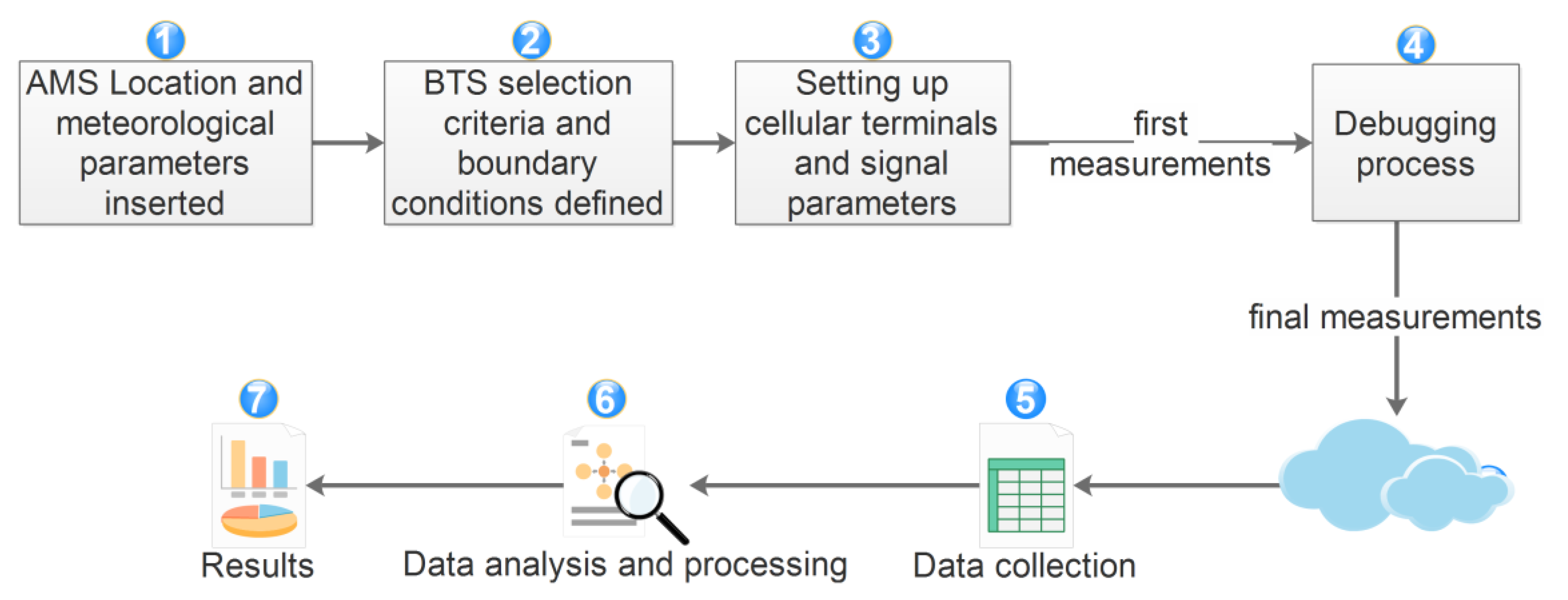
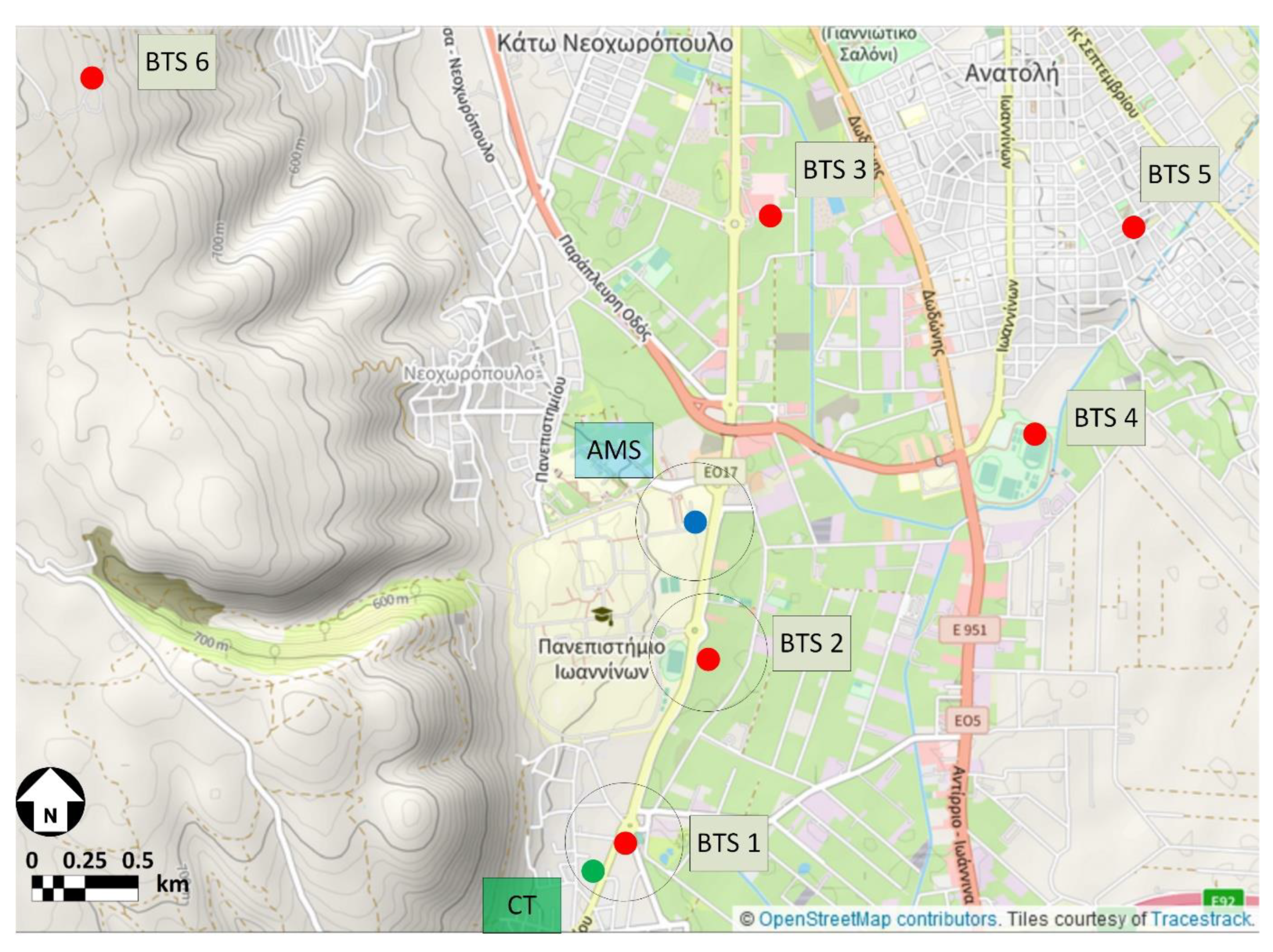

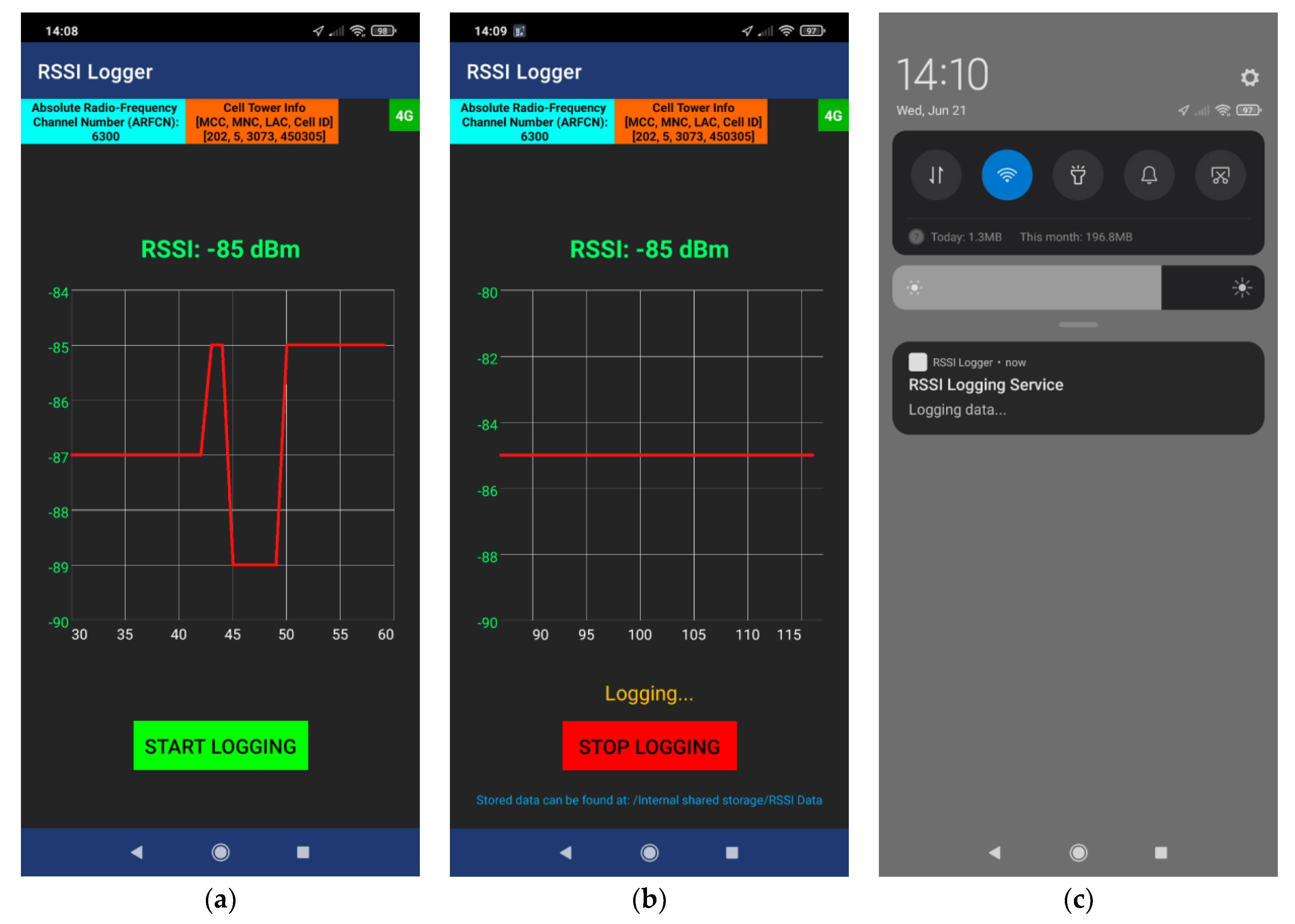
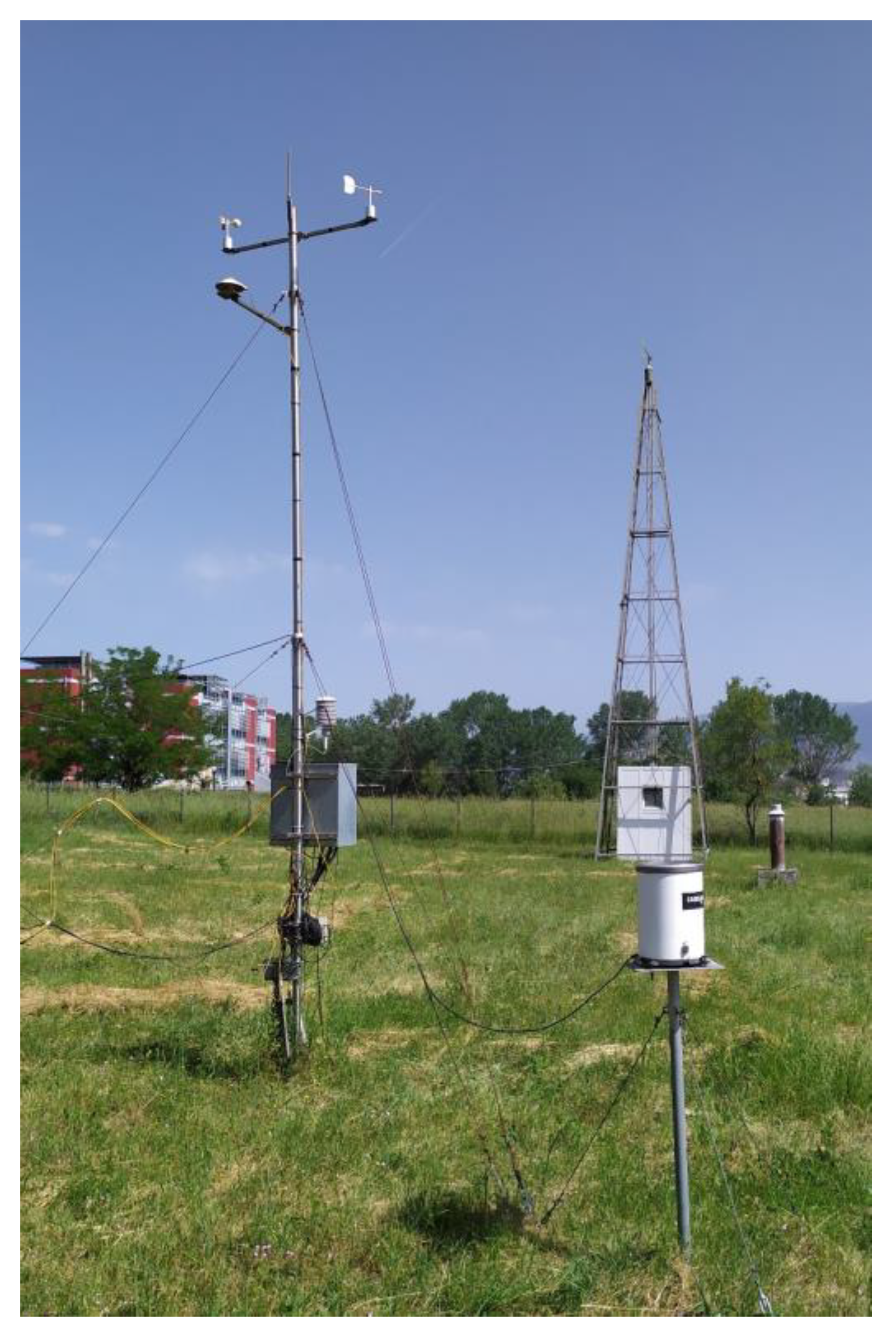

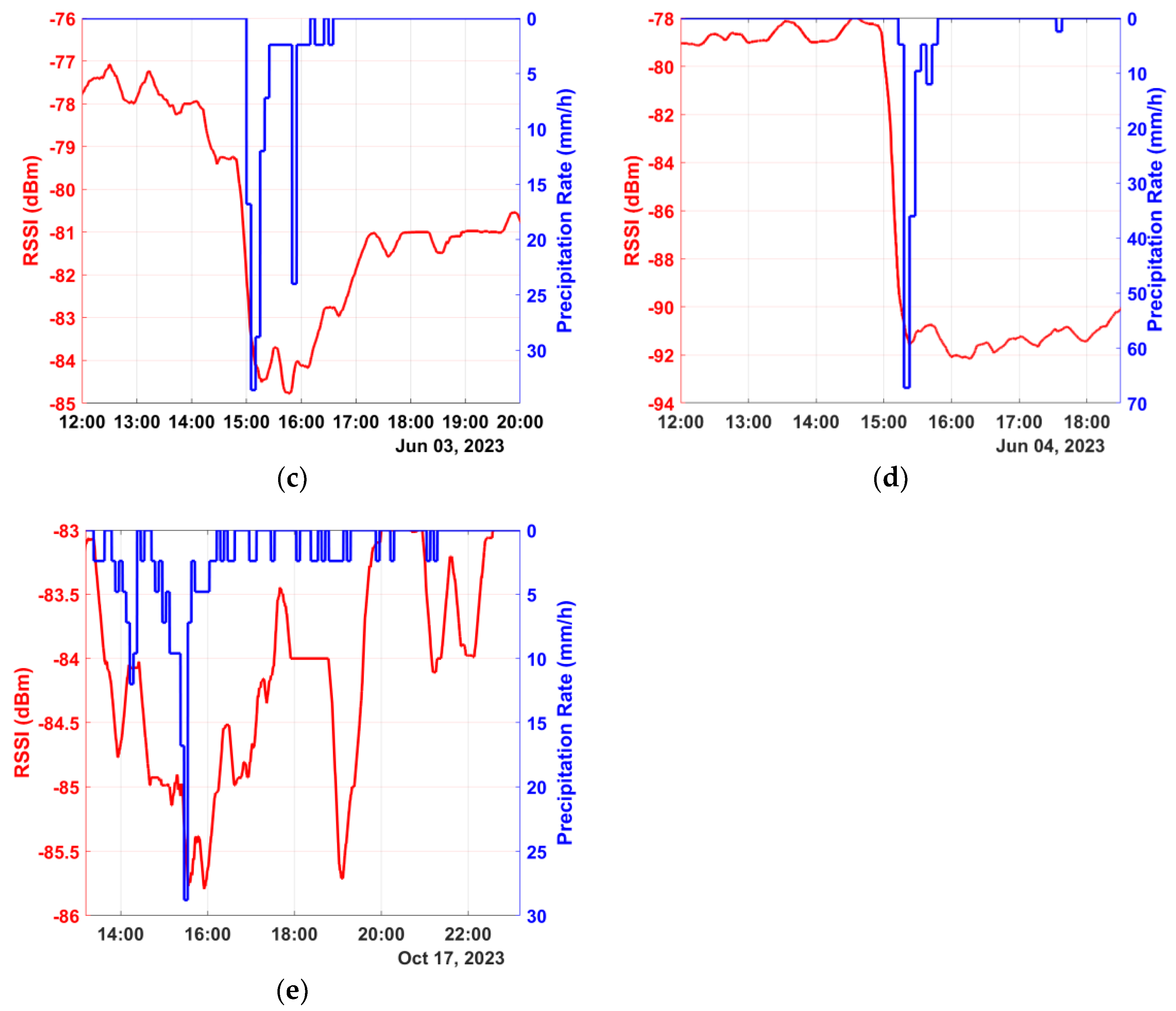
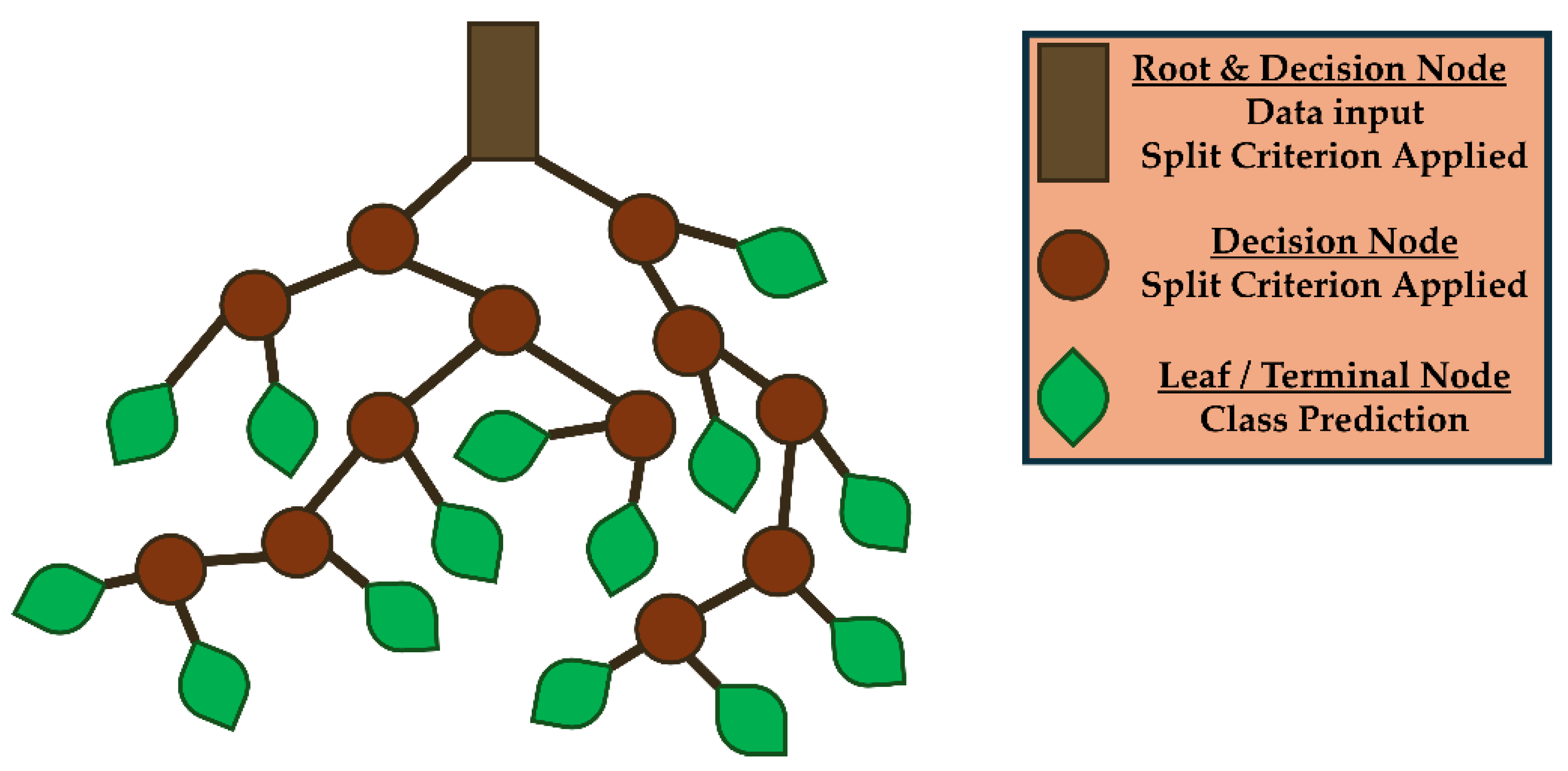

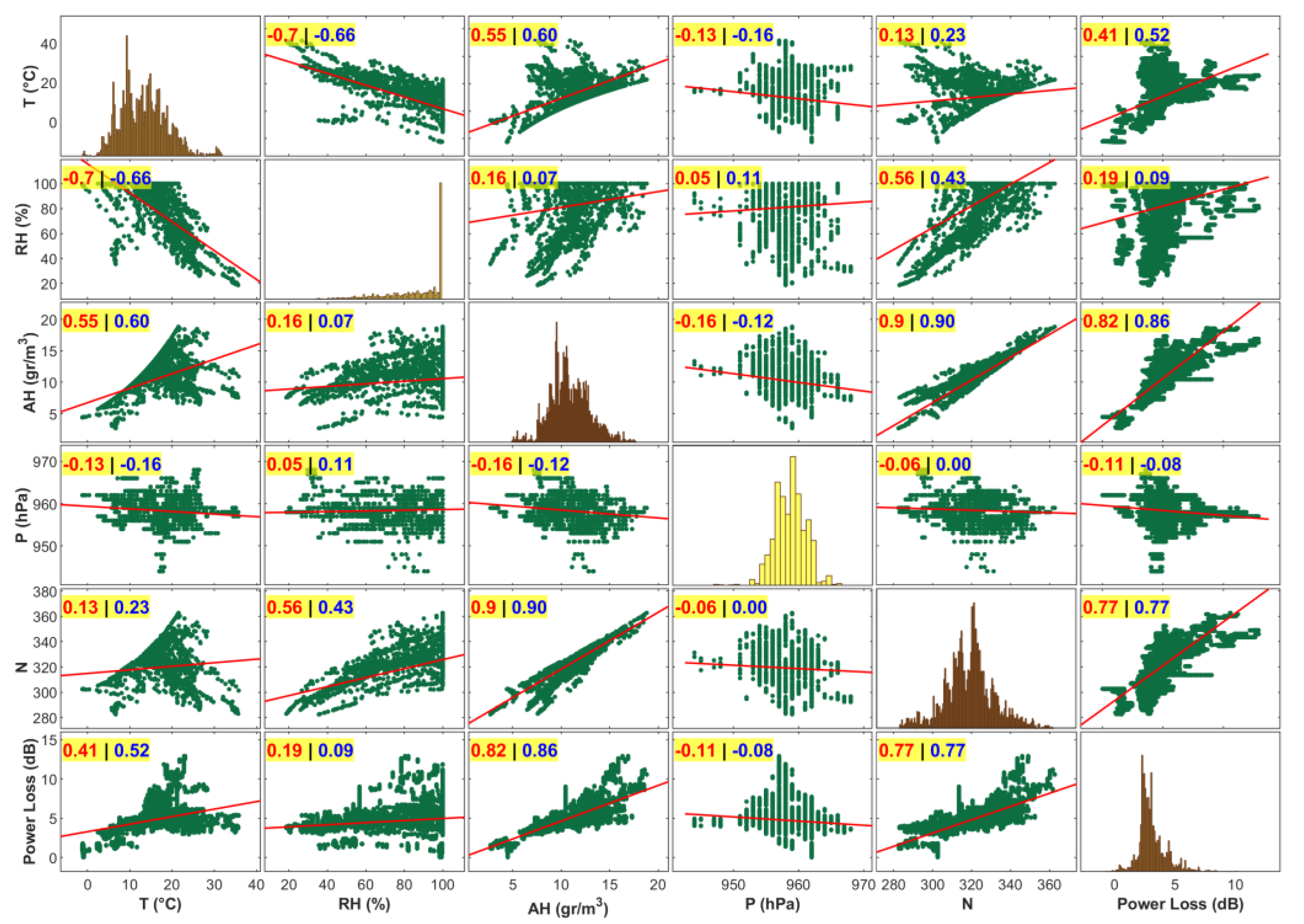
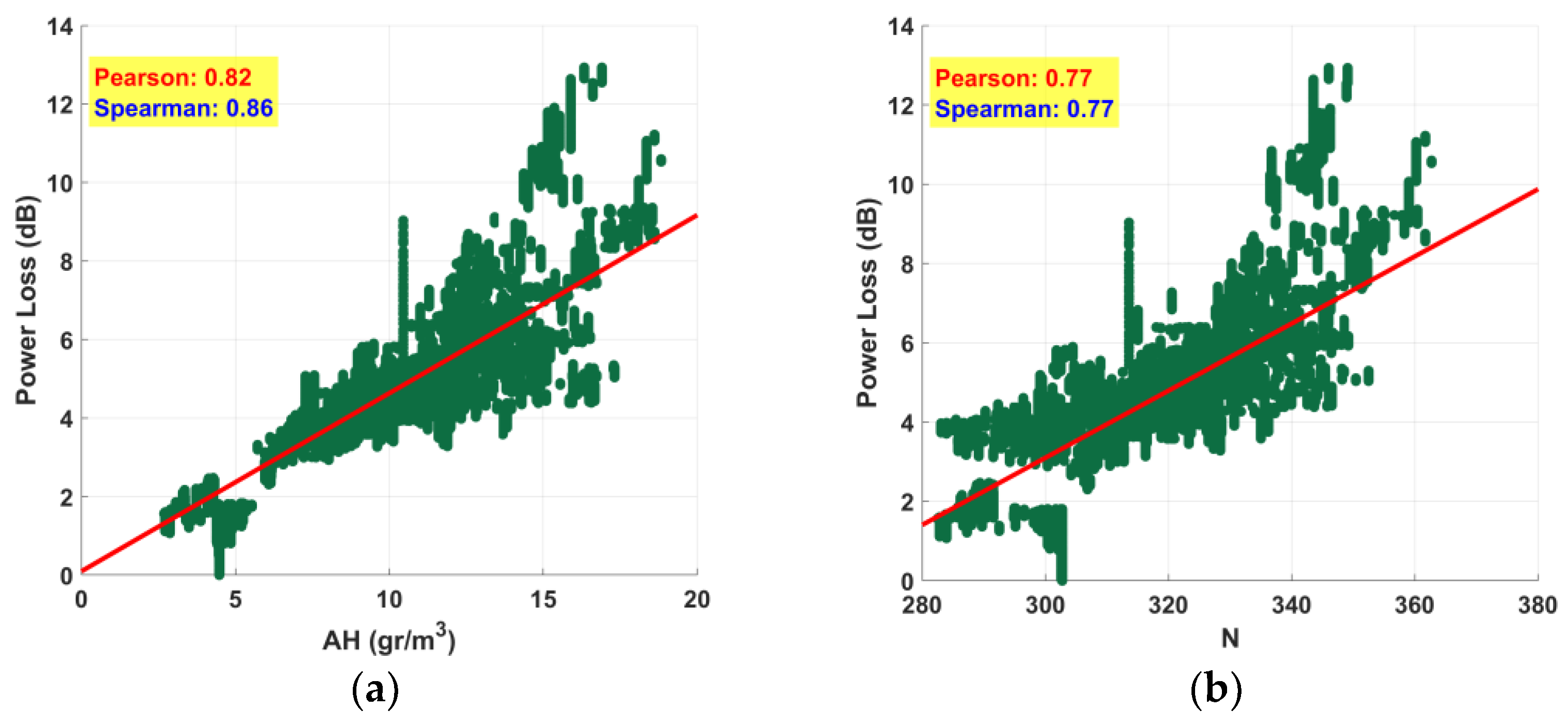
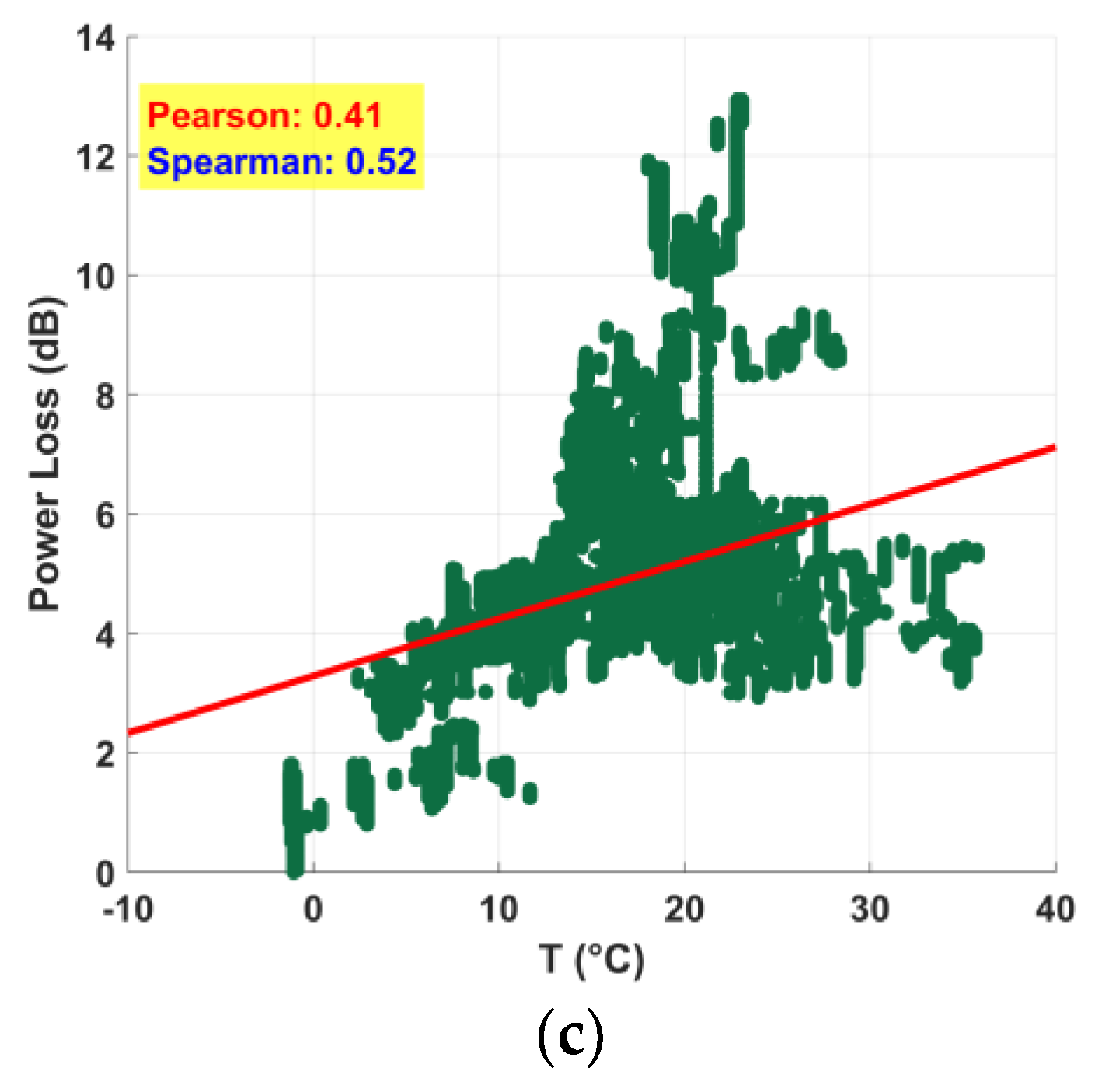
| Spot | Geographical Coordinates | Distance from AMS (km) | Altitude (m) |
|---|---|---|---|
| AMS * | 39°37′10.5″ N 20°50′48″ E | 0 | 487 |
| BTS + 1 | 39°36′21.7″ N 20°50′32.7″ E | 1.5 | 482 |
| BTS 2 | 39°36′50.3″ N 20°50′48.3″ E | 0.6 | 485 |
| BTS 3 | 39°37′59″ N 20°51′00″ E | 1.5 | 477 |
| BTS 4 | 39°37′24.7″ N 20°51′53.1″ E | 1.6 | 477 |
| BTS 5 | 39°37′56.5″ N 20°52′12.8″ E | 2.5 | 506 |
| BTS 6 | 39°38′17″ N 20°48′50.3″ E | 3.5 | 769 |
| Parameter | Value |
|---|---|
| Location number code | 1106093 |
| Cell identifier | 230153 |
| Downlink frequency (MHz) | 2630 |
| Main lobe max. gain (dBi) | 18.3 |
| Power at input of the antenna (W) | 6 |
| RSSI | Channel | Network | MCC | MNC | LAC | CID | Time |
|---|---|---|---|---|---|---|---|
| −78 | 2850 | 4G | 202 | 5 | 4060 | 230153 | 19:41:44 |
| −78 | 2850 | 4G | 202 | 5 | 4060 | 230153 | 19:41:54 |
| −78 | 2850 | 4G | 202 | 5 | 4060 | 230153 | 19:42:04 |
| −78 | 2850 | 4G | 202 | 5 | 4060 | 230153 | 19:42:14 |
| −78 | 2850 | 4G | 202 | 5 | 4060 | 230153 | 19:42:24 |
| −78 | 2850 | 4G | 202 | 5 | 4060 | 230153 | 19:42:34 |
| −78 | 2850 | 4G | 202 | 5 | 4060 | 230153 | 19:42:44 |
| Classification Model | Decision Tree TPR (%) | SVM TPR (%) | KNN TPR (%) | AdaBoost TPR (%) | FNN TPR (%) |
|---|---|---|---|---|---|
| Class | |||||
| 1. No Rain | 99.8 | 91.3 | 99.8 | 93.9 | 90.1 |
| 2. Light Rain | 88.6 | 75 | 100 | 81.3 | 73.7 |
| 3. Moderate Rain | 82.4 | 76.5 | 74.5 | 80.9 | 65 |
| 4. Heavy Rain | 81.3 | 78.6 | 42.8 | 82.8 | 72.8 |
| 5. Very Heavy Rain | 90 | 85.7 | 85.7 | 88.5 | 80.1 |
| Overall Accuracy (%) | 88.4 | 81.4 | 80.6 | 85.5 | 76.4 |
| Ref. | Experimental Setup | Frequency | Studied Meteorological Parameters | Precipitation Classification |
|---|---|---|---|---|
| [29] | Cellular terminals | GSM (1.8 GHz) | Precipitation, wind speed | - |
| [30] | Cellular terminal | 4G/LTE | Precipitation | No rain and three rain classes |
| [31] | Cellular terminal | 2 GHz | Precipitation | Wet/dry |
| [32] | Outdoor links | IEEE 802.15.4 (2.4 GHz) | Temperature, absolute humidity, precipitation, sunlight | - |
| [33] | Outdoor links | IEEE 802.15.4 (2.4 GHz) | Temperature, relative humidity, absolute humidity | - |
| [34] | Outdoor links | IEEE 802.15.4 (2.4 GHz) | Vegetative growth, temperature, relative humidity, absolute humidity | - |
| [35] | Outdoor links | LoRa (868 MHz) | Soil humidity | - |
| [36] | Indoor sensor network | 868 MHz | Temperature, relative humidity | - |
| [37] | Outdoor links | LoRa (868 MHz) | Temperature, absolute humidity | - |
| This study | Cellular terminal | 4G/LTE (2630 MHz) | Precipitation, temperature, atmospheric pressure, relative humidity, absolute humidity, radio refractivity | No rain and four rain classes |
Disclaimer/Publisher’s Note: The statements, opinions and data contained in all publications are solely those of the individual author(s) and contributor(s) and not of MDPI and/or the editor(s). MDPI and/or the editor(s) disclaim responsibility for any injury to people or property resulting from any ideas, methods, instructions or products referred to in the content. |
© 2024 by the authors. Licensee MDPI, Basel, Switzerland. This article is an open access article distributed under the terms and conditions of the Creative Commons Attribution (CC BY) license (https://creativecommons.org/licenses/by/4.0/).
Share and Cite
Sakkas, A.; Christofilakis, V.; Lolis, C.J.; Chronopoulos, S.K.; Tatsis, G. Harnessing the Radio Frequency Power Level of Cellular Terminals for Weather Parameter Sensing. Electronics 2024, 13, 840. https://doi.org/10.3390/electronics13050840
Sakkas A, Christofilakis V, Lolis CJ, Chronopoulos SK, Tatsis G. Harnessing the Radio Frequency Power Level of Cellular Terminals for Weather Parameter Sensing. Electronics. 2024; 13(5):840. https://doi.org/10.3390/electronics13050840
Chicago/Turabian StyleSakkas, Alexandros, Vasilis Christofilakis, Christos J. Lolis, Spyridon K. Chronopoulos, and Giorgos Tatsis. 2024. "Harnessing the Radio Frequency Power Level of Cellular Terminals for Weather Parameter Sensing" Electronics 13, no. 5: 840. https://doi.org/10.3390/electronics13050840







